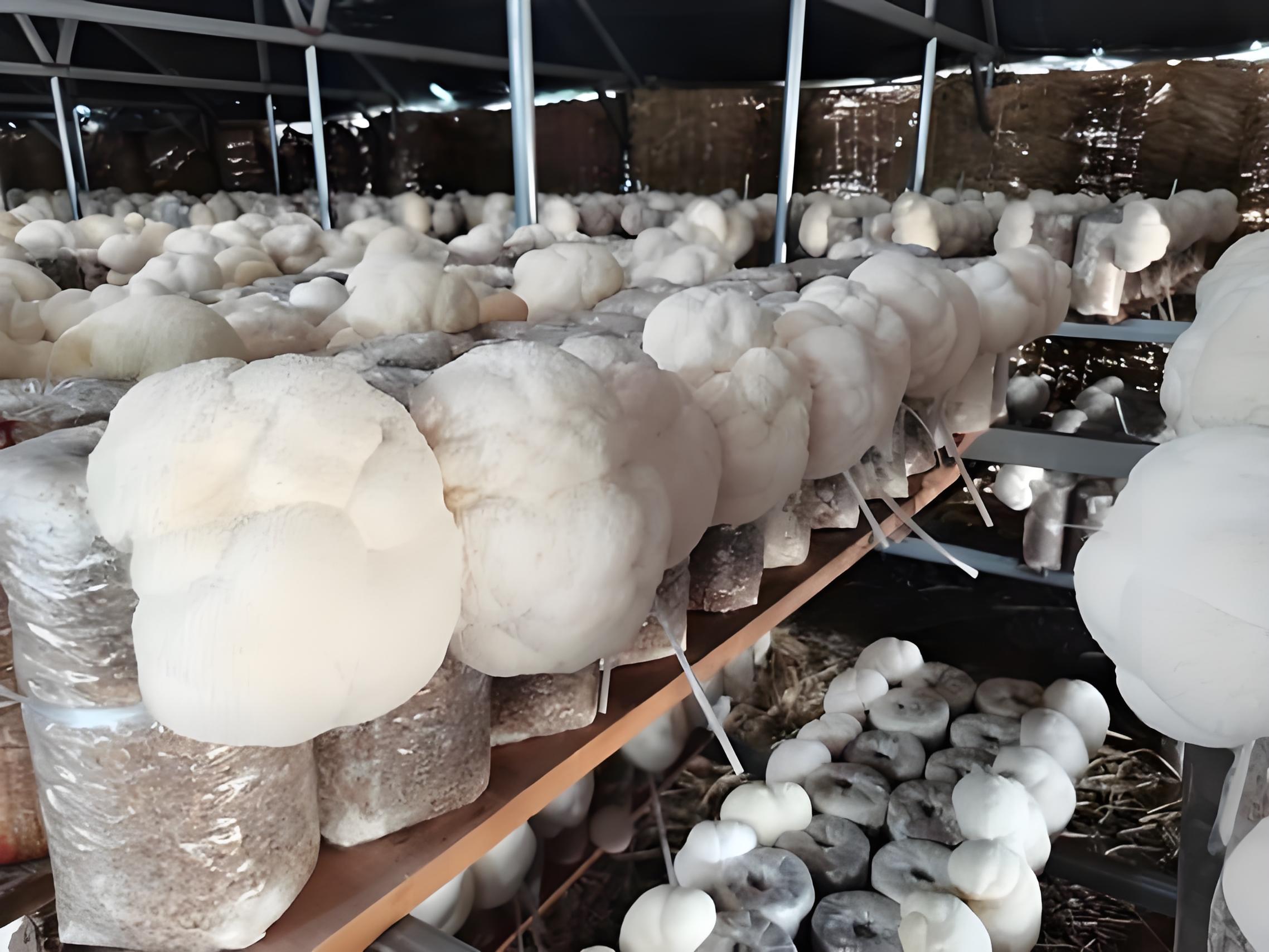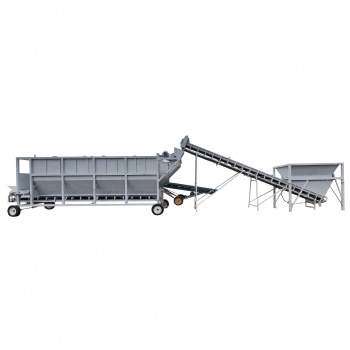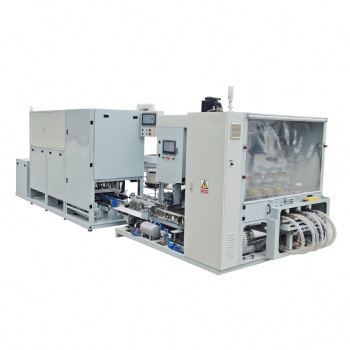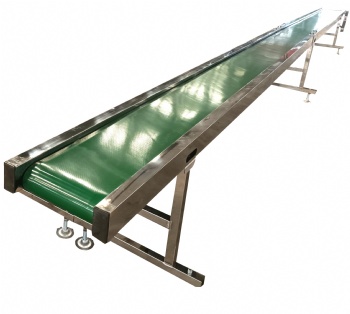News
Hericium Erinaceus Fruiting Bodies: Light & Ventilation Management
 1. Light Control
- **Growth Requirement**: Fruiting bodies need a certain amount of diffuse light for growth and development; light stimulation is essential for the differentiation of Hericium erinaceus fruiting body primordia, with a general demand for uniform illumination of 200-400 lux.
- **Stage-specific Light Needs**: Stronger light is required during the fruiting body primordium formation stage, while weaker light is applicable during the growth period.
- **Impacts of Improper Light**:
- Insufficient light (below 50 lux): Affects fruiting body formation and growth, and may lead to slow fruiting body aging.
- Excessive light (over 1000 lux): Causes fruiting bodies to turn red, grow slowly, form thorns quickly, and become smaller, resulting in poor mushroom quality.
- **Practical Light Management Measures**:
- Outdoor shade sheds: Maintain a "30% sun and 70% shade" distribution to meet the light needs of fruiting body growth and development, ensuring fruiting bodies get exposed to appropriate diffuse light.
- High-temperature scenarios: If the mushroom shed roof is fully shaded due to high temperatures, increase light transmittance around the shed to allow light in from all sides; if light is still insufficient, install electric lights to boost illumination.
- Avoid direct sunlight: When letting direct sunlight into the shed to raise temperature, cover the beds with black plastic sheeting to prevent direct sunlight from reaching the fruiting bodies.
2. Ventilation Measures
- **Basic Biological Requirement**: Hericium erinaceus is an aerobic fungus; its fruiting bodies continuously absorb oxygen and release carbon dioxide during growth and development, requiring sufficient oxygen supply. Besides, fruiting bodies are extremely sensitive to carbon dioxide during their growth and development stage, being the most sensitive among all edible fungi.
- **Ideal Carbon Dioxide Concentration**: The optimal carbon dioxide concentration in the air during fruiting body growth and development is 0.03% to 0.1%.
- **Risks of Poor Ventilation**:
- Poor ventilation or high carbon dioxide levels (exceeding 0.1%): Stimulates continuous branching of the stipe, inhibits central part development, and leads to coral-like deformed fruiting bodies.
- Saturated humidity plus stagnant air: Easily causes carbon dioxide accumulation, resulting in poor fruiting body development, more deformities, and contamination by other bacteria.
- **Practical Ventilation Management (Based on Relative Humidity and Temperature)**:
- For outdoor shelf and bed cultivation (when relative humidity is low, temperature is usually low too): Remove the film for ventilation for at least 30 minutes daily at 8:00 AM; as fruiting bodies grow, conduct ventilation in the morning and evening, and appropriately extend the ventilation time.
- For bed cultivation: Keep the plastic film at both ends of the bed open for extended periods during the fruiting body growth and development stage; if the relative humidity and temperature in the fruiting environment are suitable, completely remove the plastic film on the bed.
- For shelf cultivation: Keep the plastic film at both ends of the inner shed open for extended periods; if the fruiting environment’s relative humidity and temperature are suitable, completely remove the plastic film around the inner shed – this ensures full ventilation for the bags and fruiting bodies, which is more beneficial for fruiting body growth.
- For shelf-type mushroom sheds over 10 meters long: Add skylights every 5-6 meters on the roof, and open side windows around the edges to facilitate ventilation.
- For open-field cultivation: Firstly, let water flow through the beds to promote air circulation; secondly, for longer beds, split them every 6 meters and leave 30-40 cm ventilation holes to aid ventilation.
- Key Note: Avoid direct airflow onto the mushroom bodies during ventilation to prevent shrinkage.
3. Monitoring of the Four Key Factors (Temperature, Humidity, Light, Ventilation)
- **Temperature Monitoring**: Use a thermometer to monitor temperature.
- **Humidity Monitoring**: Use a hygrometer to monitor humidity.
- **Light Intensity Monitoring**: Assess light intensity through visual observation.
- **Ventilation Monitoring**:
- Equipment option: Carbon dioxide detectors are available for ventilation monitoring, but they are relatively expensive and not accessible to most mushroom farmers.
- Practical method: Farmers mainly rely on experience. The appearance of coral-like fruiting bodies indicates insufficient ventilation and excessively high carbon dioxide concentrations, which is a signal to increase ventilation.
1. Light Control
- **Growth Requirement**: Fruiting bodies need a certain amount of diffuse light for growth and development; light stimulation is essential for the differentiation of Hericium erinaceus fruiting body primordia, with a general demand for uniform illumination of 200-400 lux.
- **Stage-specific Light Needs**: Stronger light is required during the fruiting body primordium formation stage, while weaker light is applicable during the growth period.
- **Impacts of Improper Light**:
- Insufficient light (below 50 lux): Affects fruiting body formation and growth, and may lead to slow fruiting body aging.
- Excessive light (over 1000 lux): Causes fruiting bodies to turn red, grow slowly, form thorns quickly, and become smaller, resulting in poor mushroom quality.
- **Practical Light Management Measures**:
- Outdoor shade sheds: Maintain a "30% sun and 70% shade" distribution to meet the light needs of fruiting body growth and development, ensuring fruiting bodies get exposed to appropriate diffuse light.
- High-temperature scenarios: If the mushroom shed roof is fully shaded due to high temperatures, increase light transmittance around the shed to allow light in from all sides; if light is still insufficient, install electric lights to boost illumination.
- Avoid direct sunlight: When letting direct sunlight into the shed to raise temperature, cover the beds with black plastic sheeting to prevent direct sunlight from reaching the fruiting bodies.
2. Ventilation Measures
- **Basic Biological Requirement**: Hericium erinaceus is an aerobic fungus; its fruiting bodies continuously absorb oxygen and release carbon dioxide during growth and development, requiring sufficient oxygen supply. Besides, fruiting bodies are extremely sensitive to carbon dioxide during their growth and development stage, being the most sensitive among all edible fungi.
- **Ideal Carbon Dioxide Concentration**: The optimal carbon dioxide concentration in the air during fruiting body growth and development is 0.03% to 0.1%.
- **Risks of Poor Ventilation**:
- Poor ventilation or high carbon dioxide levels (exceeding 0.1%): Stimulates continuous branching of the stipe, inhibits central part development, and leads to coral-like deformed fruiting bodies.
- Saturated humidity plus stagnant air: Easily causes carbon dioxide accumulation, resulting in poor fruiting body development, more deformities, and contamination by other bacteria.
- **Practical Ventilation Management (Based on Relative Humidity and Temperature)**:
- For outdoor shelf and bed cultivation (when relative humidity is low, temperature is usually low too): Remove the film for ventilation for at least 30 minutes daily at 8:00 AM; as fruiting bodies grow, conduct ventilation in the morning and evening, and appropriately extend the ventilation time.
- For bed cultivation: Keep the plastic film at both ends of the bed open for extended periods during the fruiting body growth and development stage; if the relative humidity and temperature in the fruiting environment are suitable, completely remove the plastic film on the bed.
- For shelf cultivation: Keep the plastic film at both ends of the inner shed open for extended periods; if the fruiting environment’s relative humidity and temperature are suitable, completely remove the plastic film around the inner shed – this ensures full ventilation for the bags and fruiting bodies, which is more beneficial for fruiting body growth.
- For shelf-type mushroom sheds over 10 meters long: Add skylights every 5-6 meters on the roof, and open side windows around the edges to facilitate ventilation.
- For open-field cultivation: Firstly, let water flow through the beds to promote air circulation; secondly, for longer beds, split them every 6 meters and leave 30-40 cm ventilation holes to aid ventilation.
- Key Note: Avoid direct airflow onto the mushroom bodies during ventilation to prevent shrinkage.
3. Monitoring of the Four Key Factors (Temperature, Humidity, Light, Ventilation)
- **Temperature Monitoring**: Use a thermometer to monitor temperature.
- **Humidity Monitoring**: Use a hygrometer to monitor humidity.
- **Light Intensity Monitoring**: Assess light intensity through visual observation.
- **Ventilation Monitoring**:
- Equipment option: Carbon dioxide detectors are available for ventilation monitoring, but they are relatively expensive and not accessible to most mushroom farmers.
- Practical method: Farmers mainly rely on experience. The appearance of coral-like fruiting bodies indicates insufficient ventilation and excessively high carbon dioxide concentrations, which is a signal to increase ventilation.
Categories
Contact Us
- +86 15093267083
- +86 15093267083
- amy@zzbelead.com
- +8615093267083




